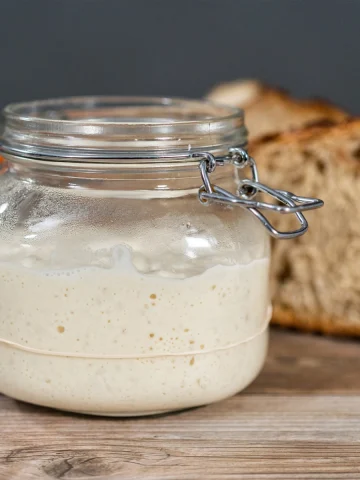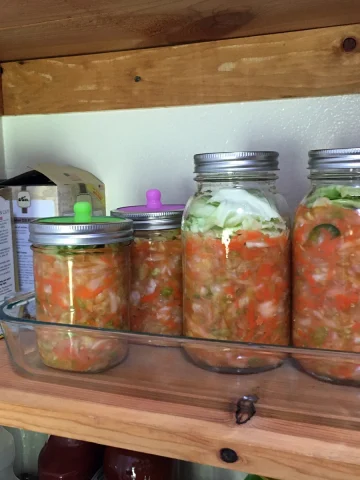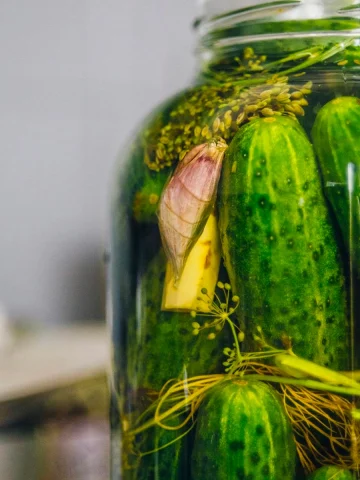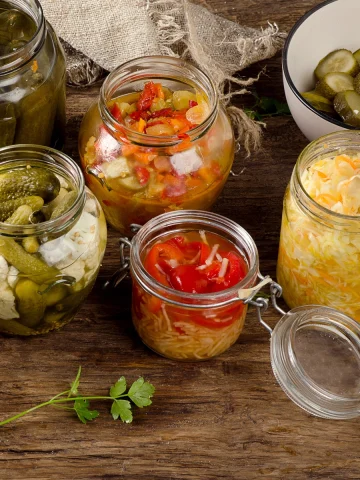You've probably heard about Kahm yeast before. Unfortunately, this common nuisance is unavoidable for beginners attempting fermented recipes. But it’s hard to understand how to avoid Kahm yeast when you don't know how to identify it or why it grows.
Here's everything you need to know about fending off Kahm yeast during fermentation.
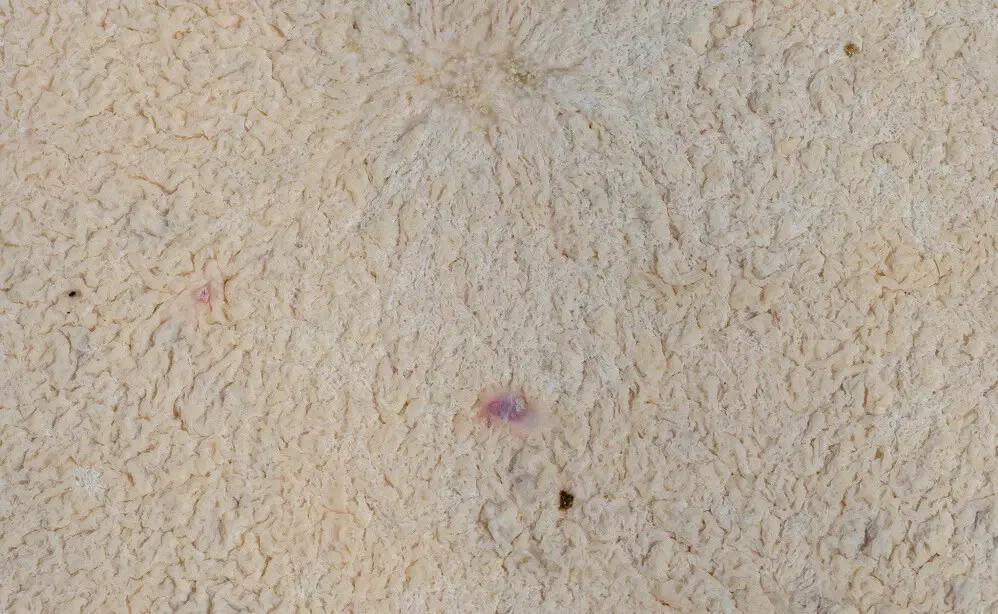
What Is Kahm Yeast?
Kahm yeast is a harmless yeast that often grows on ferments like kombucha and sauerkraut. While it might not make you sick, it can have a negative impact on the taste of your fermented foods.
Characteristics and Appearance
If you want to become a fermentation expert, dealing with Kahm yeast appropriately is essential -- and it starts with identifying it. Kahm yeast is a type of growth that tends to form a film on the surface of a ferment.
If anything pokes above the surface of your fermented brine, it may also grow on the extruding food. Generally, Kahm yeast is off-white or beige. You'll never see Kahm yeast that isn't creamy in color -- and this yeast can't form deep within a ferment, either.
If you notice that the growth in your ferment reaches through the brine, it isn't Kahm yeast. It will always form a smooth, non-fuzzy film on top of a ferment.
Kahm Yeast vs. Mold
Before you decide whether to toss your contaminated ferment, you must confirm that it's Kahm yeast, not mold. In many cases, mold can contaminate an entire ferment before it's ever visible -- and if you determine that the contamination is mold, you'll need to toss the whole ferment to be safe.
It's better to be safe than sorry, so you should discard your ferment if you notice any signs of mold. The contamination in your ferment will likely be mold if it's fuzzy (as Kahm yeast is always smooth) or if it extends below the brine's surface (Kahm yeast isn't capable of growing in the anaerobic brine).
You should also assume the contamination is mold if it's any color aside from off-white or creamy beige.
Growths with any amount of green, black, blue, fuzzy, or hairy textures are almost certainly guaranteed to be mold. In some cases, you may find a mixture of Kahm yeast and mold -- but unfortunately, it will also need to be tossed.
Causes of Kahm Yeast in Kombucha and Sauerkraut
Once you know how to identify Kahm yeast, you'll get an idea of how often it forms in your ferments. This knowledge will allow you to examine why Kahm yeast forms -- and eventually, you'll know how to prevent it.
Kombucha
One of the types of ferments that most commonly suffer from Kahm yeast formation is kombucha. This happens for a few reasons. Many beginner fermenters prepare batches that suffer Kahm yeast outbreaks because they allow the kombucha to ferment at excessively high temperatures.
While it might be tempting to keep your kombucha warm and allow it to ferment quickly, warm temperatures just don't offer suitable control and consistency for fermentation.
You're almost guaranteed to notice odd and unpleasant flavors in a rushed batch of kombucha -- if it isn't ruined before consumption by mold and yeast. Ideally, you should ferment your kombucha at approximately 70 degrees Fahrenheit.
Keep the fermentation container far away from direct sunlight or any heat sources. Use boiling water to clean your containers before fermentation, and fill the container as much as possible to reduce oxygen availability.
Sauerkraut
Kahm yeast also commonly grows in sauerkraut, including when the kraut isn't adequately submerged in or protected by its brine.
The salty brine used to ferment sauerkraut is important because it prevents oxygen from reaching the kraut (thereby preventing the growth of aerobic contaminants) while also making the environment inhospitable to most anaerobic germs.
Kahm yeast is practically guaranteed to grow if the brine isn't prepared correctly. The concentration of salt in your sauerkraut brine needs to be very high to prevent the growth of Kahm yeast.
Consider adding a bit more salt -- just stay under three tablespoons per four cups of water. You may also need to add more water if the cabbage and other vegetables in your sauerkraut aren't fully submerged.
How to Prevent Kahm Yeast
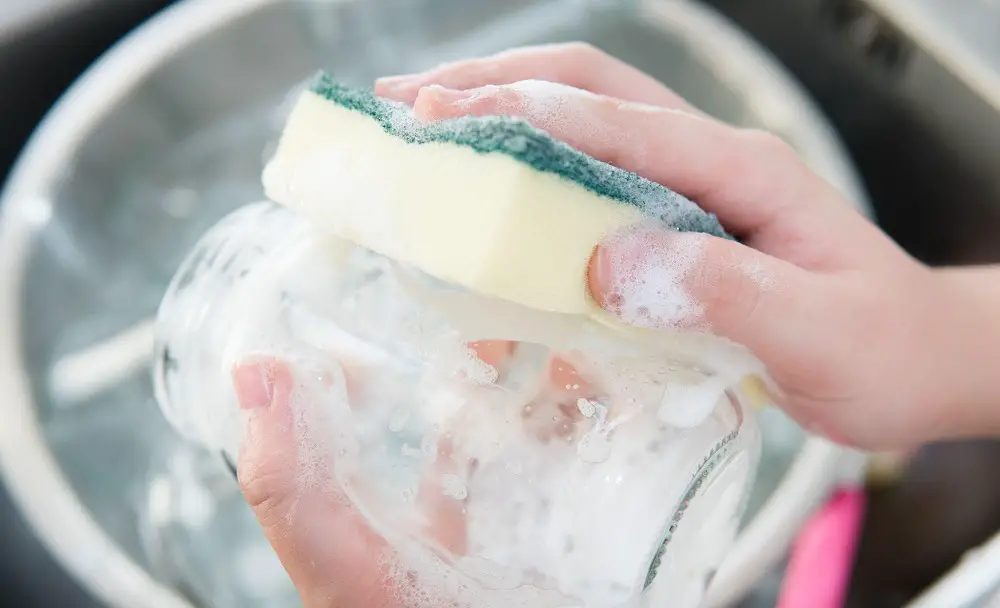
It's difficult to fend off Kahm yeast, but that doesn't mean it's impossible. Employing common-sense strategies like fermenting at the right temperature and using clean equipment will allow you to prevent the growth of Kahm yeast.
Best Practices
If you want to prevent the growth of Kahm yeast, you'll need to start by adopting a few best practices. The most important of these practices is fermenting at the proper temperature.
If your ferment is too hot, it's likely to grow Kahm yeast, and it may not taste fantastic. Ferment at or below 70 degrees Fahrenheit to prevent Kahm yeast. Make sure to prepare your brine correctly, too.
If you notice that a recipe is prone to yeast formation and other prevention strategies don't seem to work, it may be worth increasing the amount of salt you use for the recipe. If you're fermenting vegetables or other solids, ensure they're fully submerged in the brine.
You should also make sure to use pristine and clean equipment. You should thoroughly clean all equipment used for fermentation before each new batch. Boiling water and white vinegar are typically sufficient to get rid of even the most persistent germs -- just remember to cool your equipment down before you put it to use.
How to Get Rid of Kahm Yeast
It's not always possible to prevent Kahm yeast, but getting rid of it is a simple process for the enthusiastic fermenter. With the help of proven safe removal techniques, skimming away Kahm yeast and saving your latest ferment is a simple process.
Safe Removal Techniques
Because Kahm yeast grows on the surface of ferments, it's generally simple to remove. You'll need to use a clean utensil to skim the Kahm yeast from the surface of the ferment. It's best to work slowly and gently, as unsettling the brine too much may cause some Kahm yeast to sink and become unreachable.
Removing the yeast itself is the simplest part. However, you'll require a few complex techniques to prevent the yeast from growing again.
Once you've skimmed away as much of the Kahm yeast as possible, add a bit saltier brine and sprinkle salt across the surface of the ferment. You want to ensure that most of the jar is filled with brine because Kahm yeast requires growing oxygen.
If there are any weights in your ferment, remove them. You'll need to soak and wash them with vinegar and hot water before they can be returned to the jar -- doing so will kill any yeast present.
Move your ferment to a cooler location and monitor it carefully. The yeast growth may recur over the following days, but your ferment will be protected if you skim it consistently.
Is it Safe to Eat Kahm Yeast?
Now that you know why Kahm yeast grows and how it can be dealt with, you're fully equipped with the knowledge to keep your ferments pristine. Unfortunately, that can't undo the damage caused to a ferment already contaminated by Kahm yeast -- so it's easy to wonder, is it safe to eat?
Safety Considerations
In most cases, Kahm yeast is perfectly safe to eat with your ferment. It doesn't always grow alone, so it's vital to examine your ferment closely and make a cautious decision. While it might take a few weeks to redo a ferment, consuming unsafe food can cause damage to your health, lasting weeks or even years.
To start, you should determine whether any mold is present. Kahm yeast is always off-white or creamy beige and has a smooth or powdery texture. Unlike Kahm yeast, mold may grow in colors like green, orange, or black, often with a fuzzy or furry texture.
In some cases, Kahm yeast and mold may grow together. Discard any ferment that has any sign of mold.
It's also worth testing the pH of your ferment. Fermentation happens due to lactic acid bacteria feeding on the sugars in food and producing chemicals like lactic acid and acetic acid (vinegar).
If the pH of your ferment is above 4.6, it's a clear sign that your food didn't properly ferment and that the brine isn't acidic enough to prevent the growth of harmful germs.
If the pH of your ferment is adequately acidic and there doesn't seem to be any sign of mold, your ferment is probably safe to eat. That doesn't necessarily mean it's appetizing, however.
Excessive Kahm yeast is known to cause unpleasant and odd flavors in ferments because it feeds on the sugars that the lactic acid bacteria should have had access to.
If you notice any unpleasant smells, tastes, or textures, it's advisable to discard your ferment and try again. If the yeast doesn't contaminate the food in the brine itself, you can salvage your ferment by rinsing it and repacking it in a clean container with fresh brine.
Enjoy Your Ferments Free of Kahm Yeast
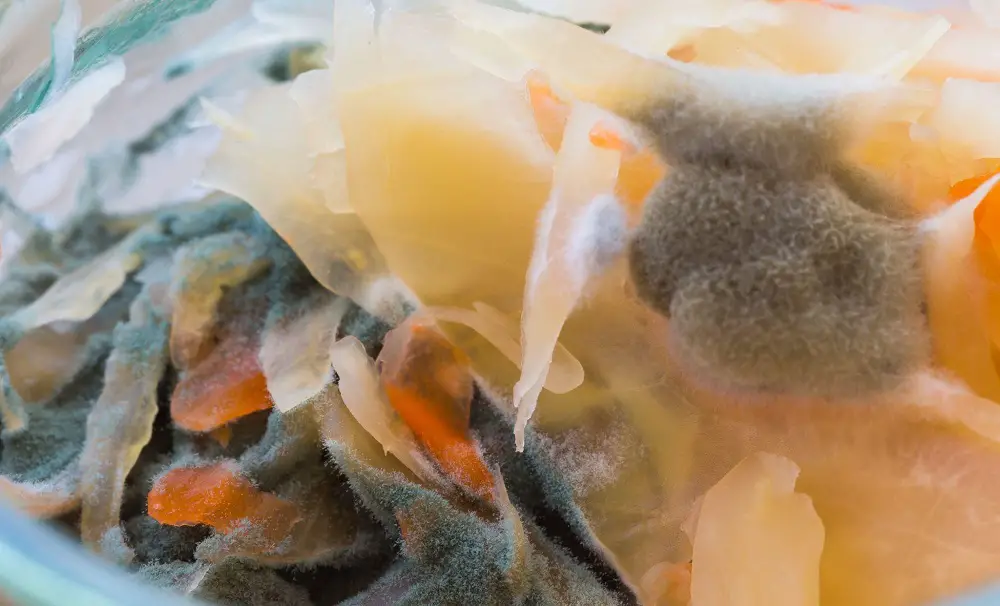
Kahm yeast is a major nuisance for the novice and expert fermenters, but it can be beaten. Maintaining high hygienic standards with your fermenting equipment, skimming the yeast as soon as it appears, replacing the brine in your ferments, and adjusting your recipes are all excellent ways to prevent and treat Kahm yeast.
You might not win the fight against Kahm yeast in a day, but as long as you continue to apply these strategies and take each challenge as a learning opportunity, you'll see the quality of your ferments improve day after day.
Frequently Asked Questions
How can I differentiate between Kahm yeast and mold in my ferment?
Differentiating between Kahm yeast and mold is relatively simple in most cases. Kahm yeast is always powdery or smooth and is typically off-white or creamy beige. It will form a film on the surface of your ferment.
Mold may be colors like black or green and may have fuzzy, hairy, or slimy textures. If you notice odd smells, tastes, textures, or any sign of contamination that isn't Kahm yeast, it's advisable to discard your ferment.
Can I scrape off Kahm yeast or discard the entire batch?
You can scrape off Kahm yeast. When Kahm yeast is addressed proactively, it shouldn't negatively impact the flavor or texture of your ferment. If Kahm yeast is allowed to grow, however, it may begin to produce odd smells and tastes in your ferment.
If you notice any unpleasant qualities, you should discard your ferment and try again.
Are there any health risks associated with Kahm yeast consumption?
There aren't any health risks associated with Kahm yeast consumption. It's known to be completely harmless. The main risk associated with Kahm yeast results from misidentification.
Most mold doesn't resemble Kahm yeast, but many slimy and hairy white molds can be mistaken for yeast. If you have doubts that the 'yeast' on your ferment is yeast, it's recommended to throw away the ferment.
What should I do if Kahm yeast keeps recurring in my ferments?
If Kahm yeast keeps recurring in your ferments, your fermentation containers are probably infected with yeast. You should immediately soak your utensils, weights, and fermentation jars in white vinegar.
Once they've soaked for several hours, you'll need to wash each piece of equipment in hot water and allow them to cool completely before they can be reused.

